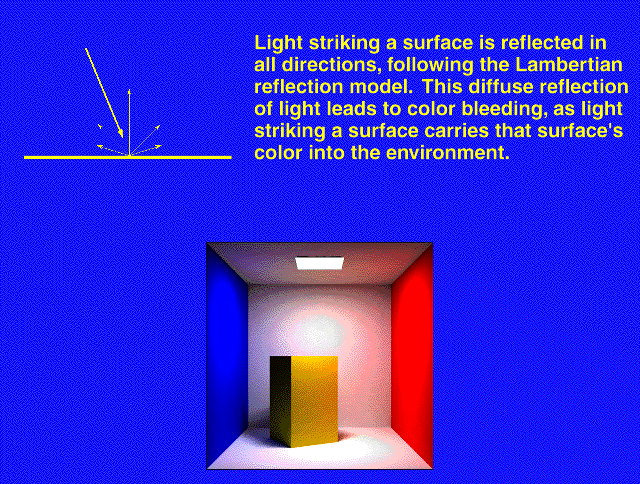
If a surface is defined to be a 'diffuse reflector' of light energy, any light energy which strikes the surface will be reflected from it in all directions. The amount of light reflected depends on how reflective the surface is, and on the angle between the surface normal and the direction of the incoming light. This relationship is expressed as Lambert's law.
Light which is reflected from a surface is attenuated by the reflectivity of the surface, which is closely associated with the 'color' of the surface. The reflected light energy often is colored, to some small extent, by the color of the surface from which it was reflected.
This reflection of light energy in an environment produces a phenomenon known as 'color bleeding', where a brightly colored surface's color will 'bleed' onto adjacent surfaces. The image in this slide illustrates this phenomenon, as both the red and blue walls 'bleed' their color onto the white walls, ceiling and floor.